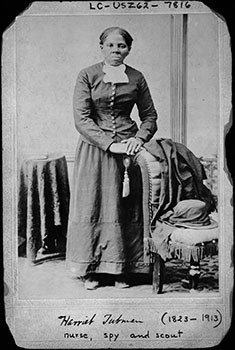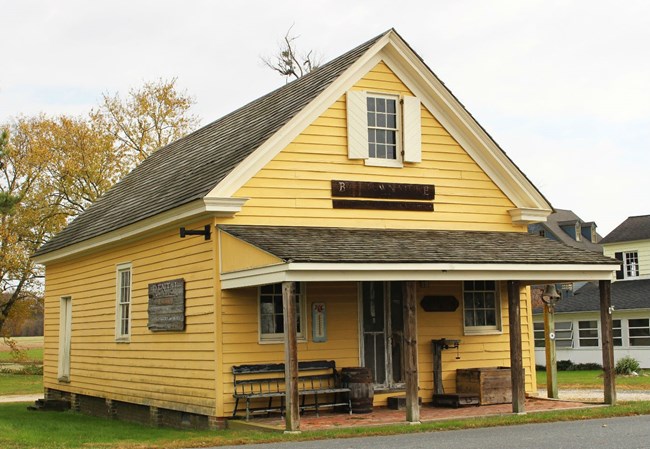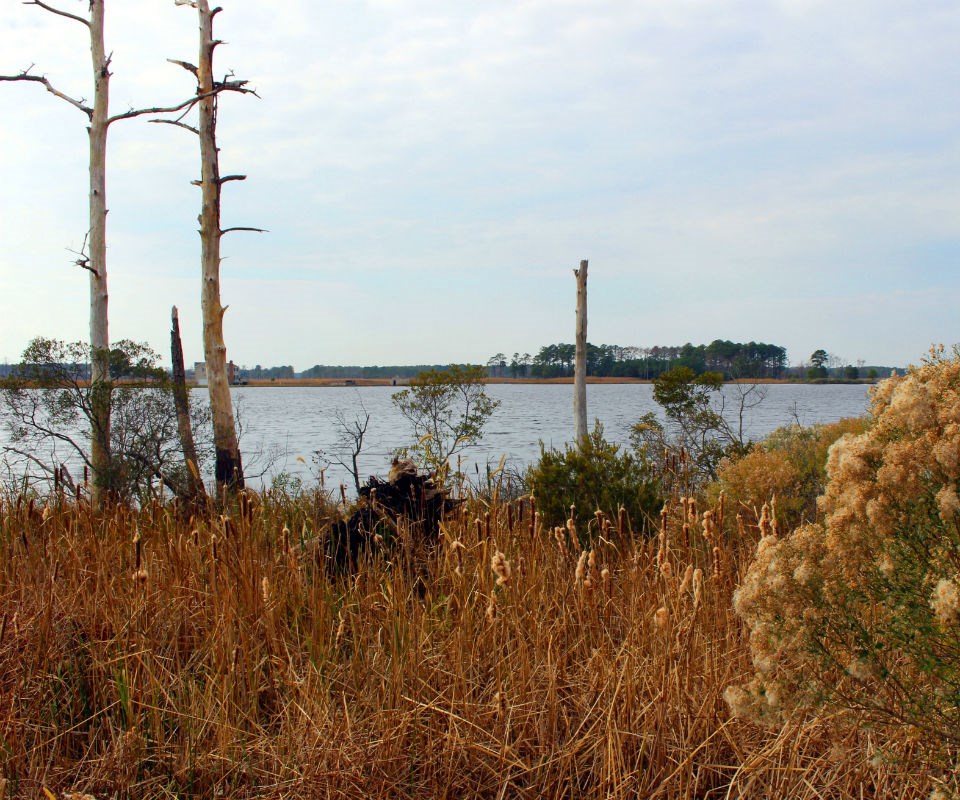Why Was Harriet Tubman Wanted What Did Harriet Tubman Continue to Work for After the Civil War

Library of Congress
Conductor on the Underground Railroad, military leader, suffragist, and descendant of the Ashanti ethnic group in Ghana, Harriet Tubman is an American hero. The sacrifices she made to save her family and friends from slavery continue to inspire others today.
Enslaved Families in Dorchester County
Araminta Ross (Harriet Tubman) was born enslaved in 1822 in Maryland's Eastern shore in Dorchester County. Harriet Tubman's parents, Harriet "Rit" (mother) and Ben Ross (father), had nine children. As a child, Tubman did not have the opportunity to spend time with her family. She was separated from her father when her slaveholder, Edward Brodess, moved only Tubman, her mother and siblings to his farm in Bucktown. Also, three of her older sisters were sold into slavery in the Deep South. By age six she was separated from her mother when she was rented out and forced to work for other masters to care for their children, and catch and trap muskrats in the Little Blackwater River. Tubman remembered the emotional pain being separated from her family, which she never wanted to experience again.

NPS Photo / Beth Parnicza
During her years in slavery, Harriet Tubman resisted. In the Bucktown Village Store, she refused to help an overseer stop a freedom seeker (runaway slave). The overseer threw a two pound weight at the enslaved man, but it hit Tubman in the head instead, almost killing her. This blow to the head caused Tubman to have sleeping spells (epilepsy) her entire life. Her mother did the best she could to nurse her daughter back to health, but again, Tubman was taken from her mother and forced back to work. Despite continuous separation, Harriet Tubman found ways to spend time with her family. Tubman hired herself out and worked in the timber fields with her father at Stewart's Canal in Parson's Creek, cutting and logging wood down the canal.
Harriet Tubman worked in the marshlands (swamps) on the Eastern Shore of Maryland as an enslaved child into adulthood which gave her the skills to navigate the marshlands and gain her freedom. Other skills Tubman gained to navigate the landscape came from African American mariners (sailors) working in the timber fields at Parson's Creek. African American sailors had more mobility than free and enslaved people. They transported goods on their ships to Baltimore, Maryland, Pennsylvania, and Delaware. These sailors provided a network of communication on the Underground Railroad for Tubman and other freedom seekers.
During her time working in the marshlands at Parson's Creek she married her first husband, John Tubman, who was a free man. She changed her name from Araminta Ross to Harriet Tubman, perhaps in honor of her mother. In Dorchester County, free and enslaved African Americans lived and worked in the same community. Some enslaved men and women married free African Americans. Free African Americans provided freedom seekers information on the location of safe houses and routes on the Underground Railroad.

NPS Photo / Beth Parnicza
Escape from Slavery
In March of 1849, Tubman's enslaver, Edward Brodess, died. Tubman knew that in order for Brodess's wife to pay her husband's debts, she needed to sell some of her slaves. Tubman did not want to be sold away from her family and into the even more brutal conditions of slavery in the deep South. In the fall of 1849, she escaped from slavery alone, and found freedom in Philadelphia, Pennsylvania. In Philadelphia, Tubman made connections and found support among other black and white abolitionists. Although Harriet Tubman found her freedom, she was separated from her family. Between 1850 and 1860, Tubman returned to the Eastern Shore of Maryland 13 times and freed more than 70 family and friends so that they could be free together.
Military Leader
Tubman's work as a liberator continued into the Civil War (1861-1865). Before the war started, Tubman caught the attention of several white politicians because of her contacts with well-known black and white abolitionists in the North. Massachusetts Governor, John Andrew, heard of Tubman's successes freeing slaves on the Underground Railroad out of Maryland, and taking them North into Philadelphia and St. Catharines, Ontario, Canada. Andrew believed the knowledge and skills that Tubman gained traveling the marshlands in Maryland's Eastern Shore would be useful in the marshlands on the coastal region of South Carolina, since the two landscapes were similar.
Tubman arrived in Port Royal, South Carolina in 1862 to help Union generals recruit black troops, serve as a Union spy, and nurse wounded soldiers. Perhaps her most dramatic effort to weaken the Confederacy came on June 1, 1863, when she planned and led an armed raid along the Combahee River, becoming the first woman to do so in U.S. military history. Tubman, Colonel James Montgomery, and the 2nd Carolina Colored Infantry burned several plantations, destroyed Confederate supply lines, and freed more than 750 people from slavery.
Life in Auburn, New York
In 1859, Harriet Tubman bought a house in Auburn, New York from Senator William H. Seward to serve as a home for her family. After the war, women and African Americans continued their fight for equality and voting rights. Tubman became a co-founding member of the National Association of Colored Women that demanded equality and suffrage for African American women. After 1869, Harriet married Civil War veteran Nelson Davis, and they adopted their daugher Gertie. On March 10, 1913, Harriet Tubman died of pneumonia and was buried in Fort Hill Cemetery in Auburn.
Throughout her life, Harriet Tubman was a fighter. Tubman's legacy continues in society years after her death. During World War II a ship was named in her honor. Aburi, Ghana features a statue of Tubman, and her image appeared on U.S. postage stamps. She is scheduled to appear on the new twenty dollar bill in the year 2020. Tubman's story speaks compassion and courage that continue to touch the lives of people.
Suggested readings
Source: https://www.nps.gov/hatu/learn/historyculture/htubman.htm
0 Response to "Why Was Harriet Tubman Wanted What Did Harriet Tubman Continue to Work for After the Civil War"
Postar um comentário